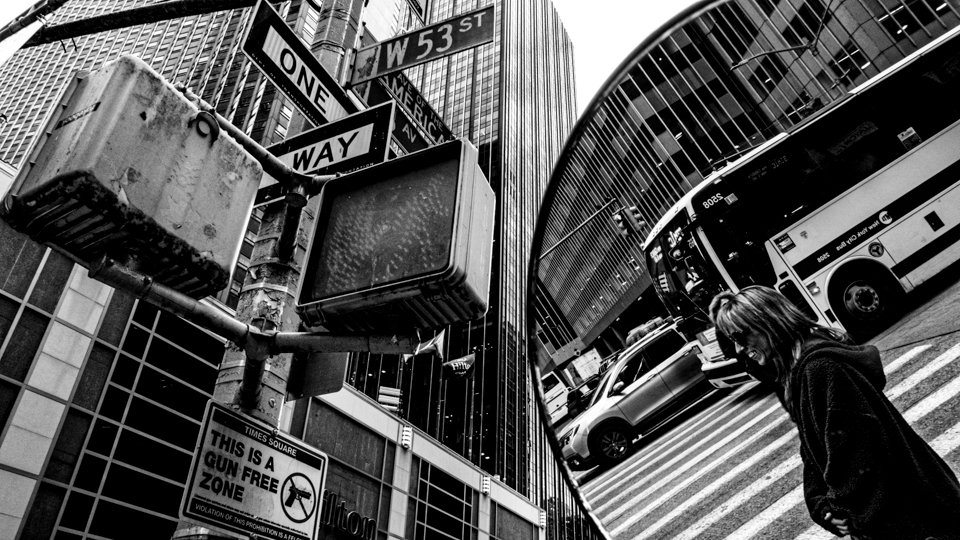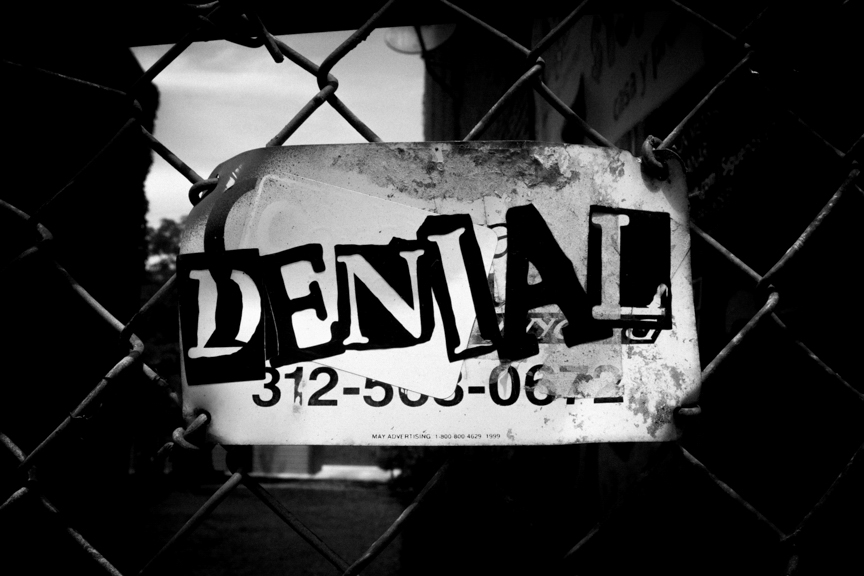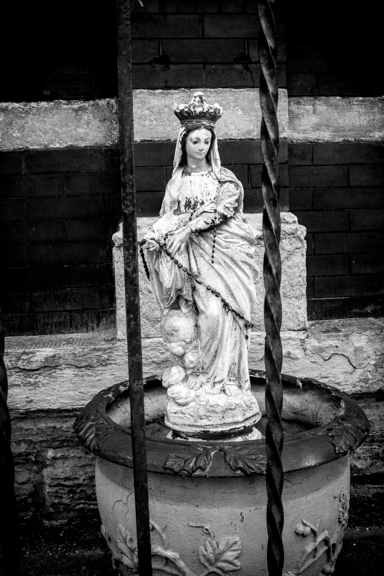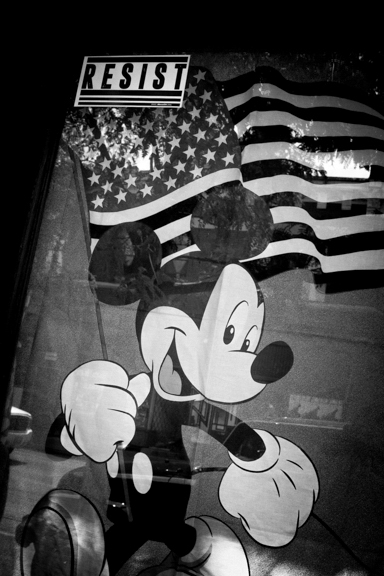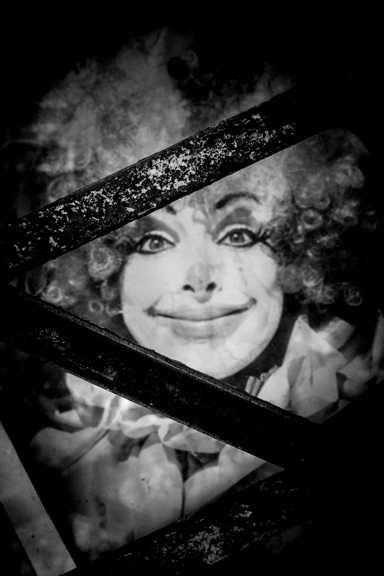The image that I'd like to spend time discussing in further detail happens to be the cover image from the book. So, what do we see? A color image, shot inside a subway car. The composition is solid, with the main subject, a shirtless man, slightly off center, and rows of florescent lights angling down on either side of him, pulling the viewer's attention right to the middle of the frame. We then can focus our gaze on the gold necklaces hanging around the man's neck, with a cross sitting squarely in the middle of his muscular chest. The man's face is obscured in shadow, but we can clearly make out a mustache above his upper lip. Judging by his skin tone, and the religious jewelry, I am making the assumption that he is a Hispanic male, most likely in his late teens or early 20s.
Firstly, what I find striking about this image is how close to his subject Davidson got to take this photo. It was surely shot with a wide-angle lens, so I would guess that he was standing within a foot or so of his subject. This is no "on the sly" hipshot. The subject certainly knew he was being photographed. What makes this image so intriguing to me is when I start to consider who this shirtless man may be, what kind of personality might he possess? He has the machismo to be riding the subway shirtless, which is a bold statement of non-conformity and a disregard of the likely rules against doing so. He is also showing off jewelry that I'm sure has some monetary value. One would think a quick grab from a thief would garner items that could be sold on the street for a decent amount of cash. However, who would dare make this kind of move? Is the shirtless man challenging those around him with this kind of flaunting? Is he daring other to try to make a move on him? Is there any irony in the fact that he is showing symbols of his religious faith in an environment that many would argue is devoid of God's presence?
I would guess that many riders in that particular subway car were averting their eyes from this man, as most New Yorkers will tell you is one way to survive in the city... never make eye contact with anyone. Davidson is doing almost the same thing here. We don't actually see the man's eyes. They are mostly hidden. Yet, the photographer does not shy away from a different kind of confrontation in this picture. He did not turn away, but instead took the photo. This is creative bravery on display.
Again, I must revisit the fact that this image was shot on color film. As much as I prefer to shoot in black and white for most of my own work, I do recognize that there is a time and a place for color photographs. I doubt that this Bruce Davidson photo would have the same impact if it were shot in black and white. The beautiful skin tones that inform so much, the pop of the gold chains, the sickly bluish green of the rows of florescent lights, the cool chrome of the straps; all gain so much by being seem in glorious color.
I highly recommend Bruce Davidson's book "Subway" to any lover of street photography. It is work that utilizes the documentary style that earned him a place along the other masters of Magnum, but merges it will a more artistic exploration of light and color. And it harkens back to the pre-Giuliani days when New York City was a seedy, dangerous, yet still exciting place to venture. The days when a quasi-vigilante group like the Guardian Angels were seen as a sensible reaction to the crime filling the streets and the subways. Maybe the good old days were a bit closer to bad old days, but something was definitely lost as the city cleaned itself up.











